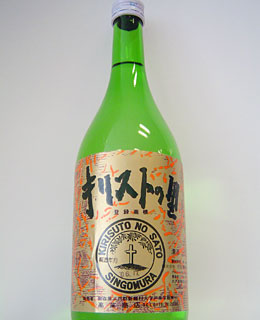
HEAVENLY HOST: Christ-branded sake in Shingo
Under the watchful nuns at our lady of Mount Carmel Catholic School in Doylestown, Pennsylvania, I learned how Jesus Christ was crucified, buried and then ascended into heaven. But it turns out that biblical revelation might have a few holes in it—at least according to the good people of Shingo, a tiny village in far northern Japan that claims to be the actual final resting place of Jesus.
The Shingo legend has it that Jesus spent his 20s not woodworking in Nazareth, but trekking through Japan where—like many a gaijin teacher after him—he fell in love with the culture and learned Japanese. At age 33, he returned to Judea to preach about the "holy land of Japan" and was soon condemned to crucifixion for this heresy. However, Jesus' twin brother Isukiri somehow took his place on the cross, while Jesus escaped back to the promised land of Japan. He settled in the farming village of Shingo, where he married a local girl, had children and happily tilled the rice fields until his death at 106. You can find his burial place in the village today—just look for the sign that says "Tomb of Christ: next left."
Granted, the accuracy of Shingo's gospel revisionism may be slightly doubtful—the legend only dates back to 1935, when a Japanese priest discovered what was supposedly Christ's will. But what is certain is that the story has attracted thousands of tourists to an otherwise undistinguished mountain town four hours or so from Tokyo on the bullet train. The Tomb of Christ is just a simple mound of dirt with a large wooden cross. Isukiri is apparently buried nearby, and you can parse the legend for yourself at the Christ Museum. Visit June 10 for the annual Christ Festival, which features traditional Japanese dance and songs that locals say are derived from Hebrew. And if you find the whole story a little difficult to swallow, you can wash it down with a cup of Christ-branded sake at the Jesus Convenience Store.
—by Bryan Walsh